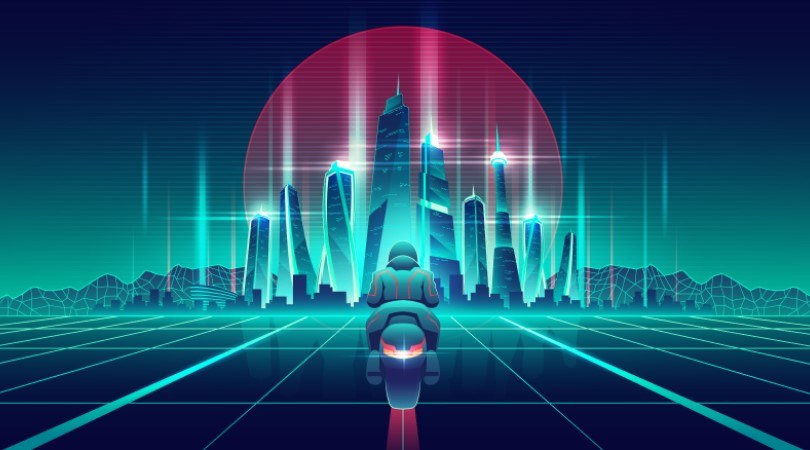
Focus: Our thoughts on the Metaverse
Author: David Ho

The term “Metaverse” has become the buzzword of the year. “Meta” means “beyond” in Greek, while “verse” is an abbreviation from the word “universe”, so “Metaverse” can be translated as “beyond the universe”. The term “Metaverse” has its origin stemmed in Neal Stephenson’s 1992 science fiction novel “Snow Crash”, where humans interact with each other in a 3-D virtual space using avatars. But what exactly is a Metaverse that everyone is talking about right now?
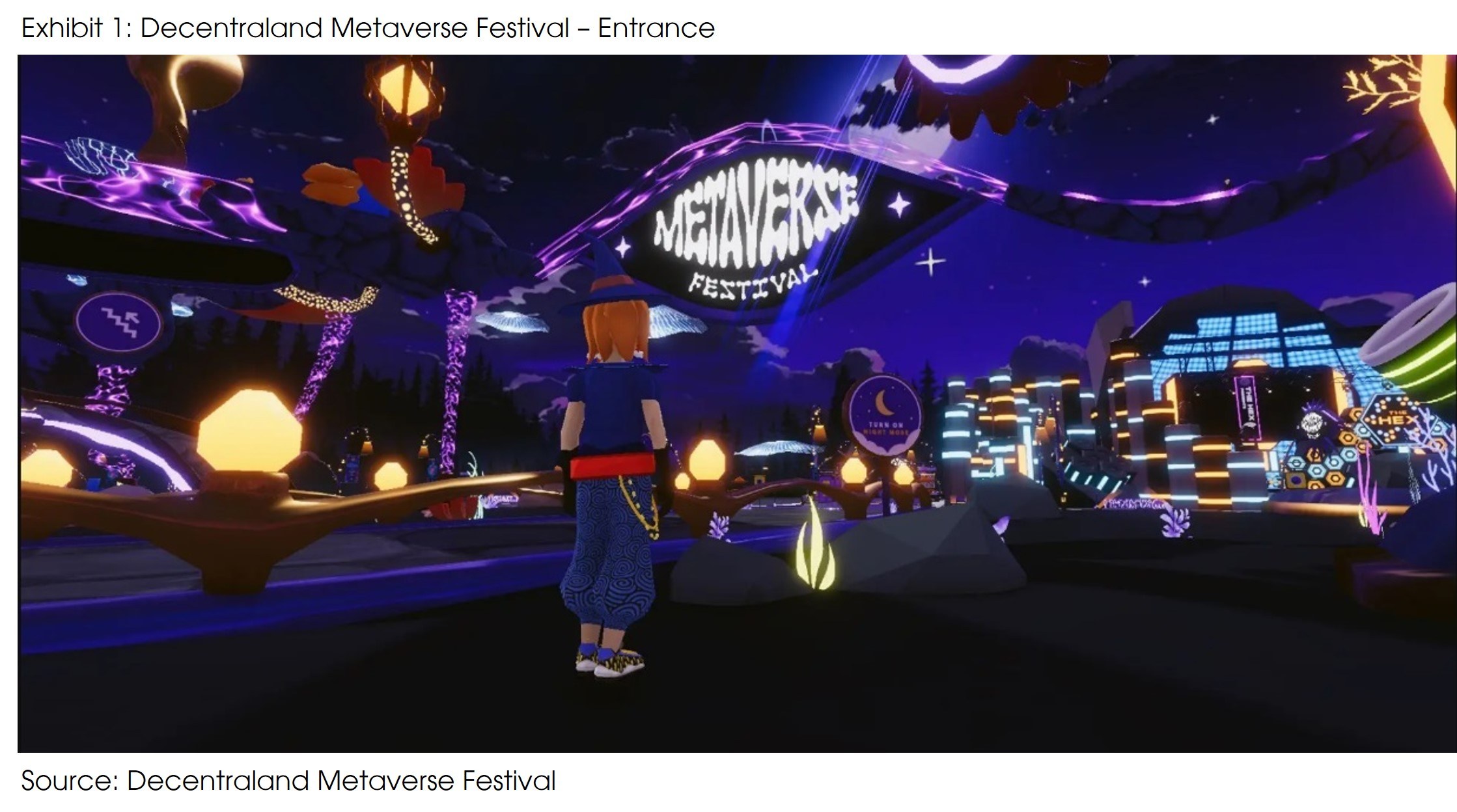
What is a Metaverse and What is not a Metaverse?
Many would think that a Metaverse is just some sort of virtual realities or online games, while some would associate Metaverse with a decentralized Web 3.0 future. We believe that these definitions are simply too narrow. Virtual reality (VR) certainly plays an important role because it gives the closest form of “presence” for people to interact in a virtual world, but the technology alone does not make another “universe”. Similarly, online games have existed for years, but they serve as entertainment for gamers only rather than another “universe” for the general population.
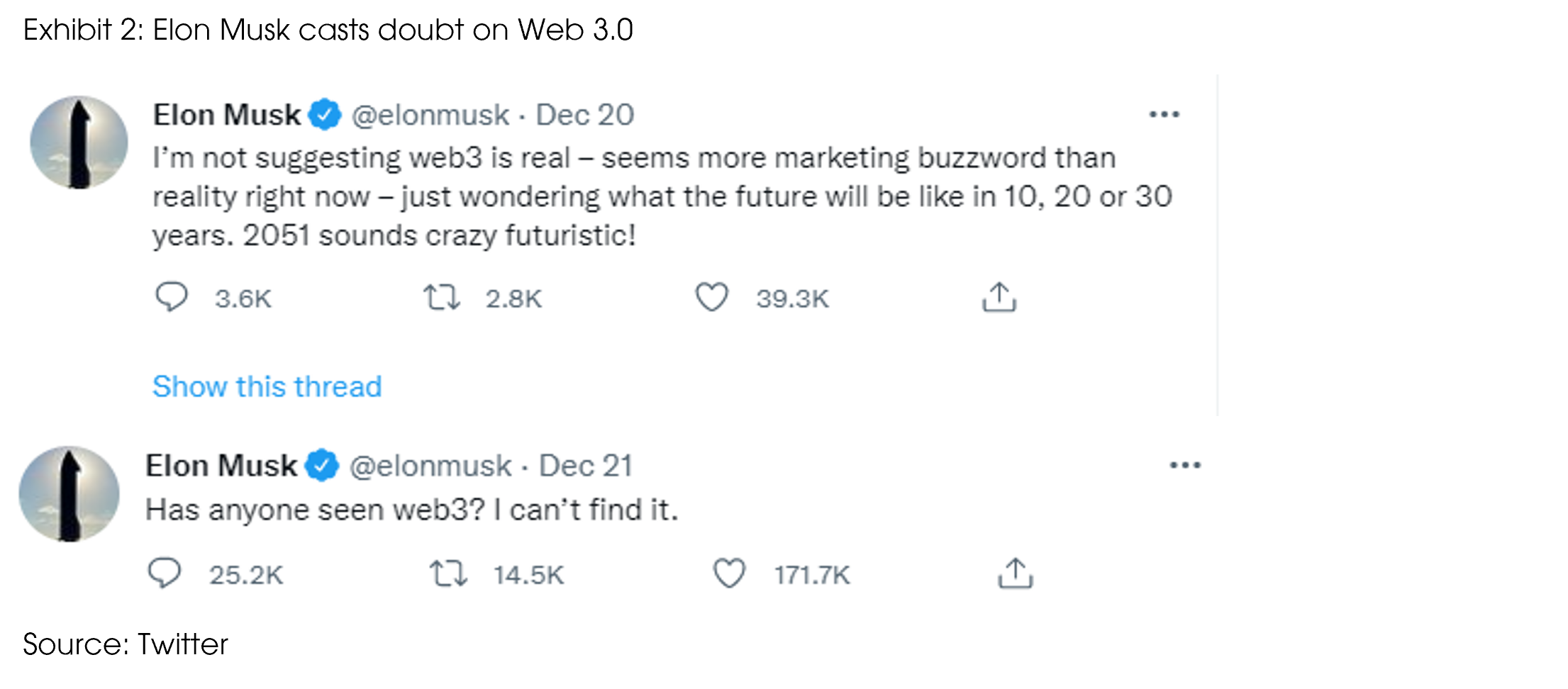
In fact, we would argue that the term “Metaverse” today is still merely a “futuristic concept” that is just starting to attract attention and investment from the world. Whatever people experience today through virtual realities, online games, virtual goods, or cryptos only represent a tiny portion of what the tech visionaries envisioned as a true Metaverse future. We should therefore not expect a universal and well-rounded definition for the Metaverse at this point. Describing a “futuristic concept” that doesn’t exist yet always takes some imagination and leaves room for error. Nevertheless, we will try to explain the Metaverse by incorporating our views with those from different tech industry leaders.
Venture capitalist Mathew Ball, who wrote extensively about the concept, imagined 7 core attributes for the Metaverse. The Metaverse should:
1. Be persistent – which is to say, the Metaverse never “resets” or “pauses” or “ends”, it just continues indefinitely.
- There is an “end” to every game / VR that we experience today.
2. Be synchronous and live – even though pre-scheduled and self-contained events will happen, just as they do in “real life”, the Metaverse will be a living experience that exists consistently for everyone and in real-time.
- Our network and technology would need to be upgraded to support the Metaverse when data transmission increase exponentially in the Metaverse.
3. Be without any cap to concurrent users, while also providing each user with an individual sense of “presence” – everyone can be a part of the Metaverse and participate in a specific event/place/activity together, at the same time and with individual agency.
- Online games like Fortnite today have a cap on the maximum number of players (i.e., 100-150) possible in “one single game room” due to technological constraints.
4. Be a fully functioning economy – individuals and businesses will be able to create, own, invest, sell, and be rewarded for an incredibly wide range of “work” that produces “value” that is recognized by others.
- While there are already functioning economies in online games like World of Warcraft where people trade virtual goods for real money, the trading and “work” possible are narrowed to just one specific game.
5. Be an experience that spans both the digital and physical worlds, private and public networks/experiences, and open and closed platforms
6. Offer unprecedented interoperability of data, digital items/assets, content, and so on across each of these experiences – your Counter-Strike gun skin, for example, could also be used to decorate a gun in Fortnite, or be gifted to a friend on/through Facebook.
7. Be populated by “content” and “experiences” created and operated by an incredibly wide range of contributors, some of whom are independent individuals, while others might be informally organized groups or commercially focused enterprises.
Point 1, 2, 3 are imagined attributes on the Metaverse’s from a technical capability perspective, which will be further discussed later when we explore how to get to a Metaverse future. We want to explore further on points 4, 5, 6, 7, which explains the Metaverse from an economic perspective.
We believe that the Metaverse is an extension of the reality, instead of a complete replacement. People could certainly choose to spend more time in the Metaverse instead of the reality, much like what they already do with the internet (i.e., social media / gaming) today. However, it is unlikely that we can “live” in a 3D-immersive virtual world all day long without ever wanting to get off our VR headsets.
In order for the Metaverse to thrive, its development has to resemble some basic principles of economics. Contents / experiences in the Metaverse are built around the idea that any participant who is incentivized by an economic interest, instead of tech professionals only, will enable an organic growth. The Metaverse also has to be an open economy which encourage people to create regardless of the platform, coding language or hardware that they use. Imagine if all the contents / apps on the Apple iOS ecosystem are limited to only the ones created by Apple itself. The iOS ecosystem would have been very boring, and it wouldn’t be as widely adopted. The same is true for the Metaverse.
Since there are businesses to be made out of a Metaverse, there will likely to be more than just one Metaverse pursued by different big tech companies.
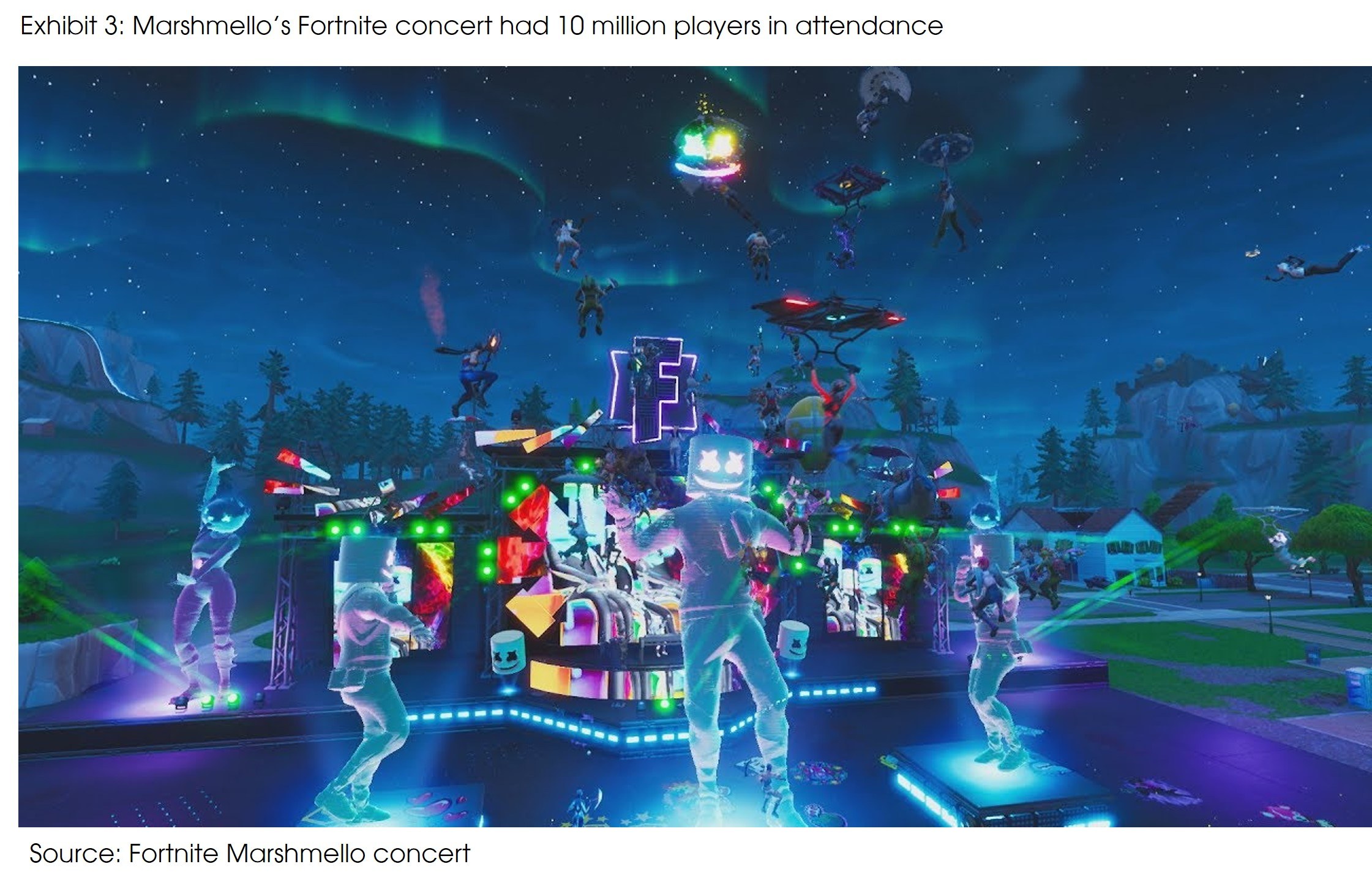
Why the Metaverse could matter?
Many believe that the Metaverse is a successor to the mobile internet. The internet satisfies all 7 core attributes imagined for the Metaverse, but what makes the Metaverse different is the form of “presence” it grants to users. Facebook CEO Mark Zuckerberg believes that people are not meant to mediate their lives and communications through their smart phone and a grid of apps. Instead, Zuckerberg believes that people should share a sense of space and presence in the next level of social interactions, which is exactly what he envisioned the Metaverse to provide.
If the Metaverse is widely adopted in the future just like the mobile internet today, it will likely produce trillions in value as a new computing platform. The Metaverse could also be a gateway to most digital experiences, a key platform for the next generation of advertising, an alternative to physical experience, and the next great platform for content creation. Even if no one knows when the Metaverse will come, the potential economic upside that people expect from the Metaverse is simply too great to be ignored. In fact, Microsoft and Facebook (now known as Meta Platforms) are investing aggressively to build their own version of the Metaverse.
The mobile internet has fostered some of the most valuable companies in the world (i.e., Apple & Google), and the pioneers in the Metaverse development could possibly be the iOS or Android system for tomorrow.
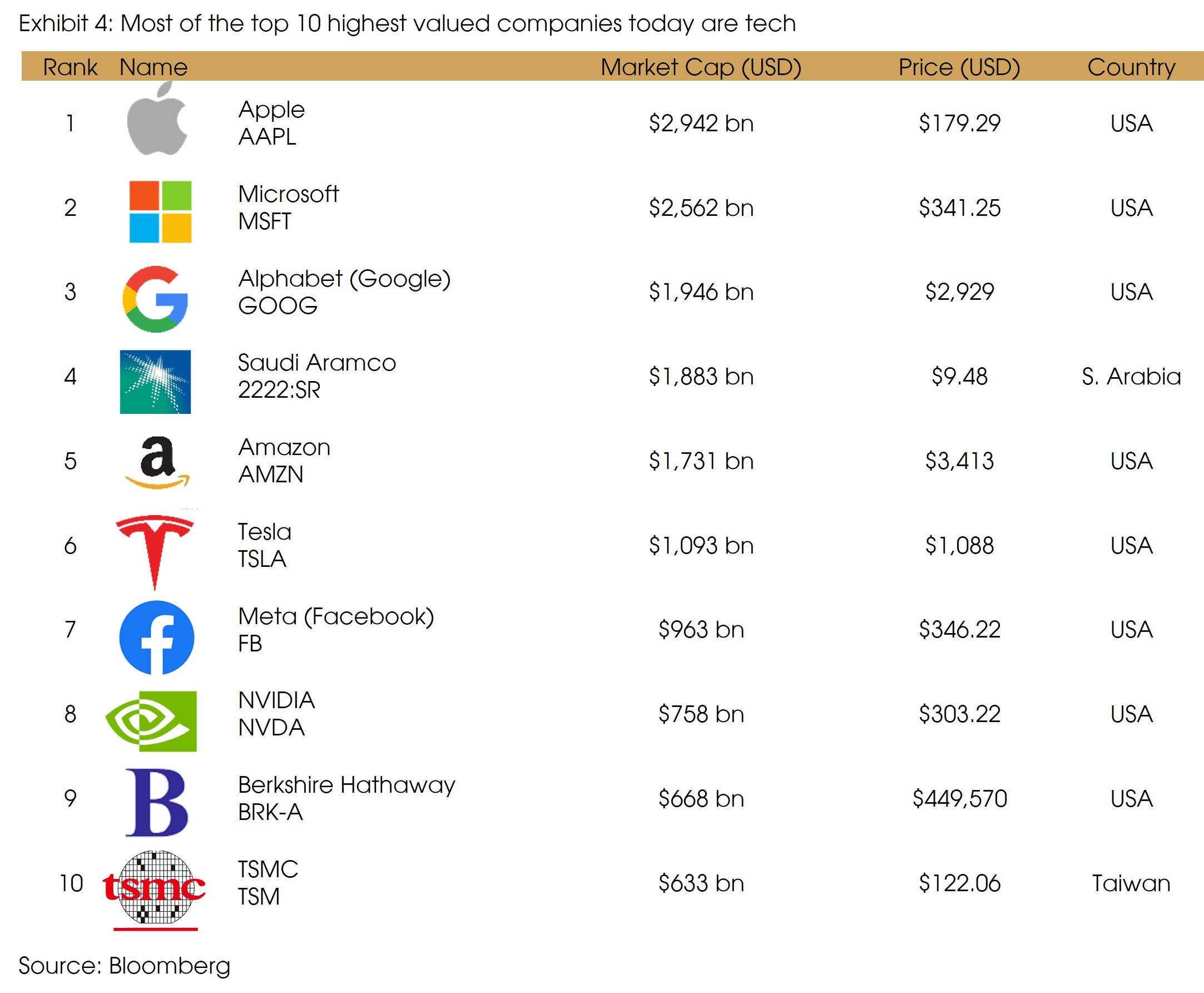
From Concept to Reality: How to get to a Metaverse future?
As discussed, building a Metaverse should be no different than building a prosperous economy. It requires countless new technologies, companies, and innovations. The progress will be a gradual one, and Metaverse will not jump into existence. There are 8 categories that could be crucial in the building of a Metaverse as tracked by Mathew Ball.
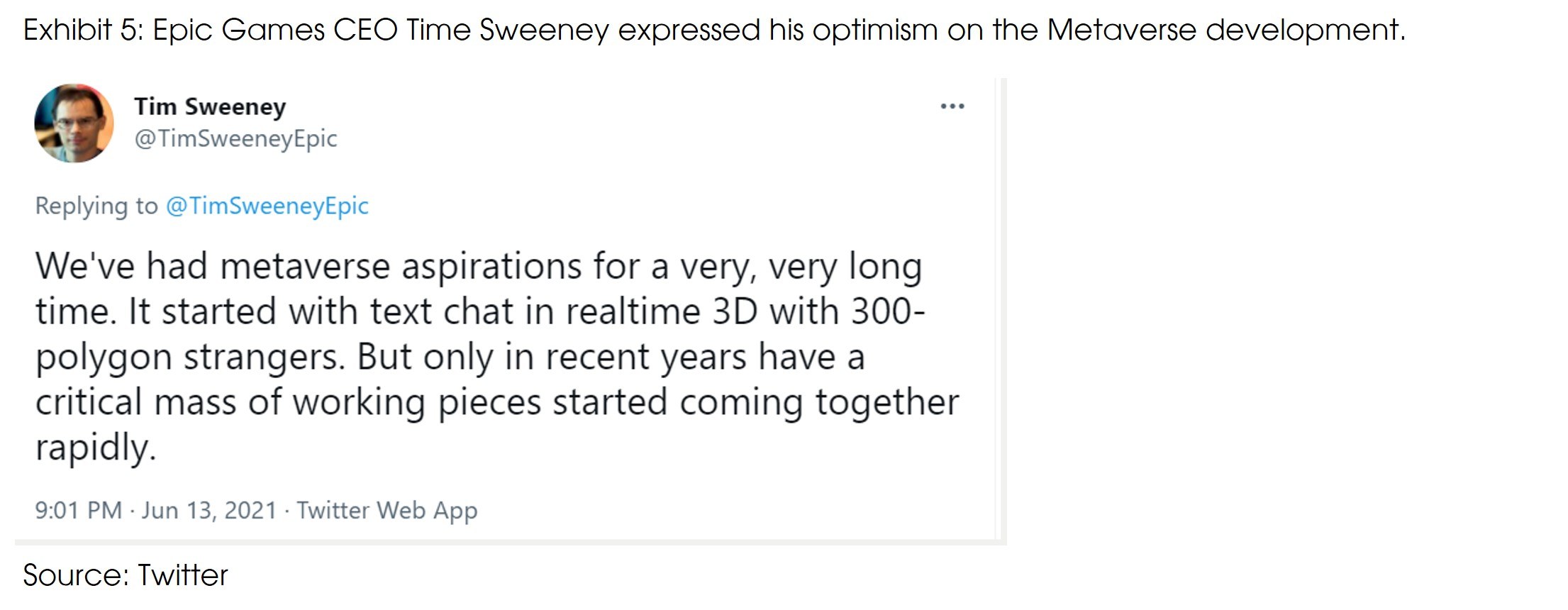
1. Hardware for Metaverse: The hardware challenge for a Metaverse future could be fitting a supercomputer into a portable device (i.e., a pair of glasses), or making VR headsets & haptic gloves as common / user-friendly as the smart phones today.

2. Network for Metaverse: Metaverse large scale simulations require an exponential increase in data transmission under an ultra-low latency condition. This is beyond the fastest modern connection capability today.
3. Compute for Metaverse: A Metaverse should be more than just a virtual simulation of scenery seen in video games / movies. The spatial computation power needed for the next level of immersive simulation (i.e., climate simulation to the molecule level) simply does not exist yet for millions of people to share simultaneously.
4. Virtual Platform for Metaverse: If people need to create social media pages today, they go to Facebook. But if people want to create their 3-D digital avatars, there are a few platforms out there such as Decentraland, Sandbox or Roblox. None of these platforms are widely recognized and sophisticated enough as the “go-to-platform” for digital avatar creations or 3D-designs in the Metaverse.
5. Interchange Tools + Standards for Metaverse: The future Metaverse platforms need to be open enough with a few interchangeable standards (i.e., tools, formats etc.) that encourage on-going content creation / consumption across platforms. People certainly do not want to create / pay for the same content across different platforms. No one platform should dominate the standards.
6. Payment for Metaverse: Transactions on blockchain can authenticate ownerships and store data in a decentralized way, but they also have short comings like high gas fees, limited processing capability, and high energy usage. Certain virtual payments today are also subject to 30% fees (i.e., Apple App Store) for the developers. A fully functioning Metaverse economy will need to find a better payment system that is efficient, secure, and cheap.
7. Content for Metaverse: Content in the Metaverse cannot be just built by the professionals. Professionally-Generated-Content (PGC) could be the building blocks, but a Metaverse also has to be filled with User-Generated-Content (UGC) driven by economic incentives. In the future, there could even be AI-assisted User-Generated-Content or Fully AI-generated content for the Metaverse. Creating a Metaverse is like creating a whole new universe from scratch, and the massive content need could be satisfied by some innovative content creation methods yet to be seen.
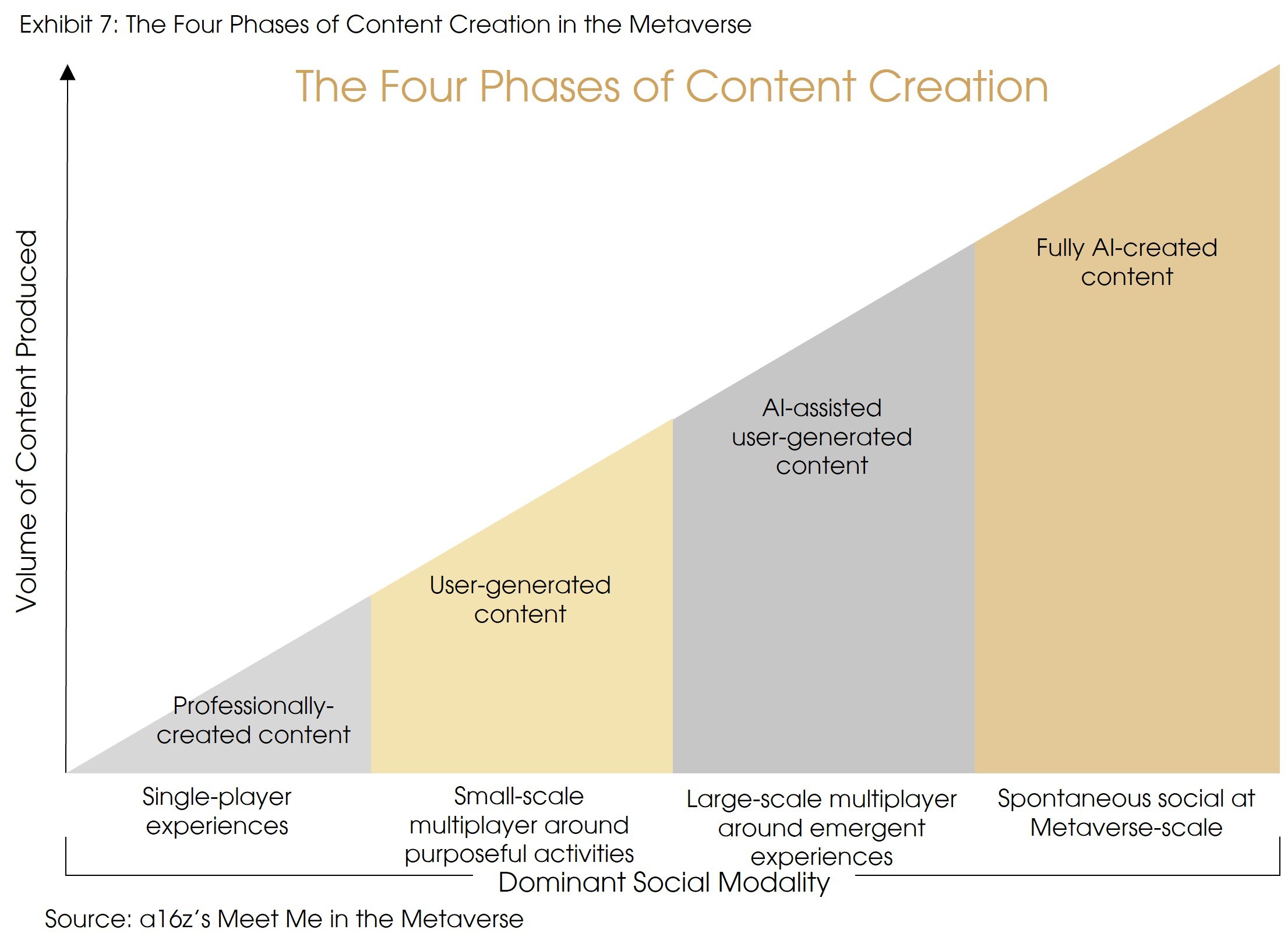
8. Community & Evolving Users Behavior for Metaverse: Finally, nothing will matter if we do not have a large-enough community which will act as enthusiastic early adopters for the Metaverse. The Metaverse must be populated first while being imperfect, rather than waiting for developers to make things perfect to attract people. The Metaverse will be developed through trial & error derived from feedback loops between content creators and users. As the users’ behavior continue to evolve, so will the Metaverse.
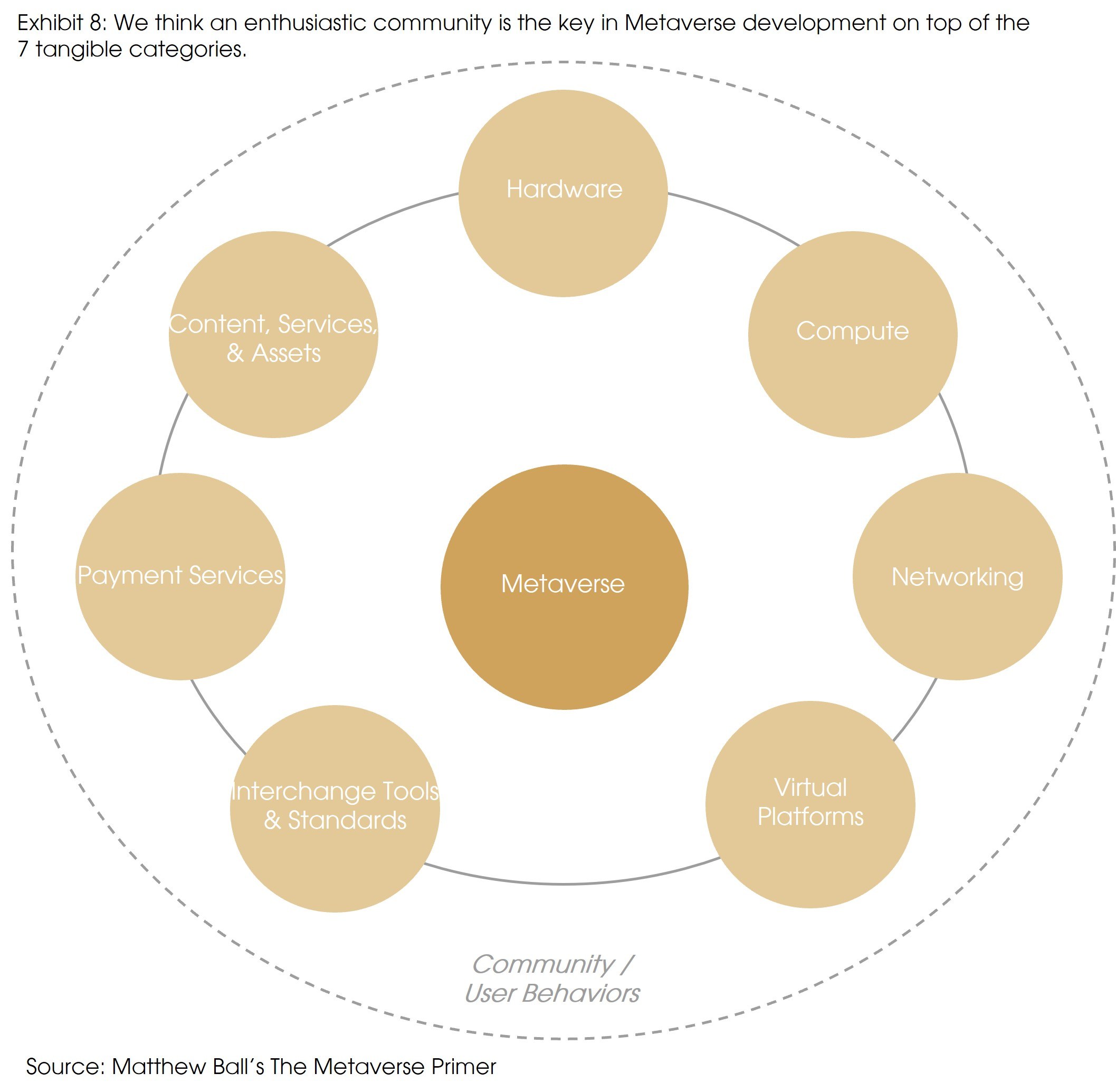
What are the possible impacts / opportunities of a Metaverse future? & What to do?
Despite all the “educated guesses” discussed above, we still do not know if the Metaverse is indeed the future. The exact changes that the Metaverse will bring to the world and the timing of its arrival are entirely unknowable. Forecasts that extend many years far into the future are usually futile, let alone deriving any investment opportunities from them. It is easy to take today’s mobile internet as given, but getting to our iPhone 13 required many innovations and investments (i.e., apps, hardware, network, content development etc.). When the iPhone was first introduced in 2007, probably very few futurists could foresee the world of opportunities that we have in the mobile internet today. Should an investor wish to pursue “the Metaverse opportunities”, which automatically comes with a high uncertainty, we believe that instead of speculating on the virtual assets (i.e., Non-fungible token, virtual land etc.) that could appreciate in the Metaverse, it might be safer for investors to find the potential building blocks that could enable the Metaverse. Some examples of “Metaverse enablers” could be hardware companies that enable immersive VR experience, platforms with large communities for content creations or software companies that enable immersive 3-D designs / modelling.

As the term “Metaverse” continues to gain momentum, it is shocking but not surprising to see people already spending millions of dollars on virtual real estate or NFT artwork through platforms like Sandbox or OpenSea. We are not in a position to judge if these “investments” are bubbles or the next billion-dollar opportunities, but rather, to pay attention to these new concepts as they unfold before us. Bill Gates was ridiculed by a TV host in 1995 for backing the internet as the next big thing. Space Travel and Autonomous Driving were thought to be “far-away” merely a decade ago. The point is, when most new technological revolutions emerge, very few people in the world could foresee the impact and make sense of them at first.
The journey to the Metaverse will not be plain sailing, and investors probably should not expect any high-conviction investment opportunities related to the Metaverse at this stage. Nevertheless, our final piece of advice for spotting opportunities is to stay open minded and be aware of the changes happening in the world, even if some of them do not seem to make any sense now.
Sources: a16z's Meet Me in the Metaverse, Bloomberg, Decentraland, Facebook, Fortnite, Matthew Ball's The Metaverse Primer, The Verge, Twitter


